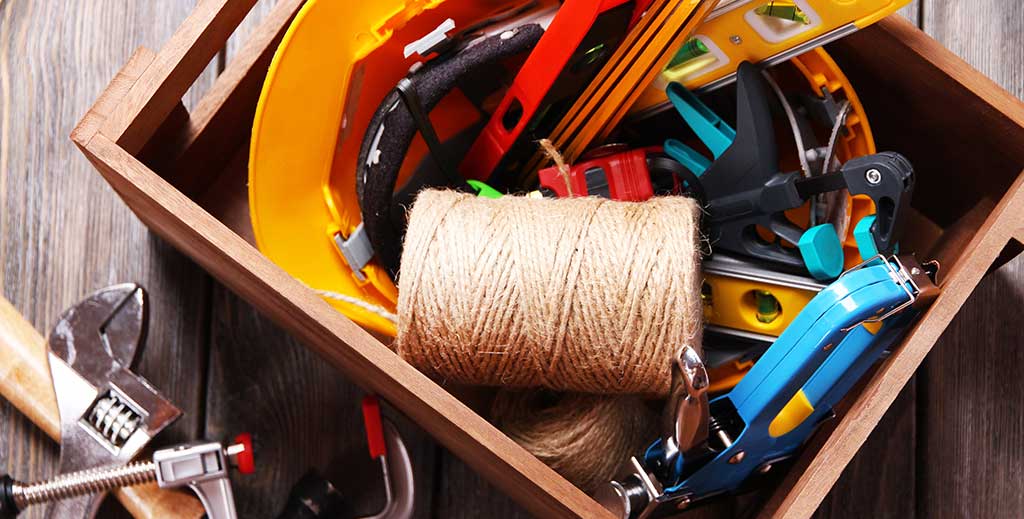

Identifying Hazards
We perform many diverse tasks every day, but one aspect remains constant for all tasks: it is part of everyone’s duty to perform the job as safely as possible. To perform a job in a safe manner, we worker must understand the hazards involved and how to prevent them.
Recognizing hazards is a way to see accidents before they happen, but we must also understand how to control them; we must know the common causes of accidents and understand that safety is a team effort that depends on everyone. Let us remind ourselves of a few activities and how they feature in hazard recognition and control.
HOUSEKEEPING
• All tools should be kept where they belong until it is time to use them.
• Accidents often occur when workers find it easier to use the wrong tool rather than search for the correct one.
• Flammables should be stored away from ignition sources and all trash disposed of properly.
• Walkways and aisles should remain clear of obstacles and debris.
TRIPS AND SLIPS
• Always report any spills that create a slipping hazard to your supervisor so it can be cleaned up immediately.
• Correct any tripping hazards right away. Safety is a team effort; don’t assume someone else will do it
LADDER SAFETY
• When using ladders, make sure the base is secure and out of the path of traffic flow; the base may need to be barricaded.
• Be sure that the spreader is in the locked position when using a step ladder.
• Before climbing, inspect the steps and your shoes for slippery substances.
• Never stand on the top two rungs of a ladder; if you can’t reach something, climb down and move the ladder.
LIFT TRUCKS AND LOADS
• In areas where lift trucks are in operation, stay alert for blind intersections and corners.
• Never walk behind a lift truck or stand close enough to it for a sudden movement to hit you.
• Never allow yourself to get underneath a raised load; stand clear of loads that are being lifted because they have a tendency to swing.
• Inspect all lifting equipment to see that it is good condition before each use.
MOVING MACHINERY
• Machines cannot see accidents before they happen. We must recognize the hazards involved with moving machinery.
• Long hair, jewelry or loose clothing should not be worn around equipment in motion.
• Never operate equipment without the proper guards in place; never bypass or defeat a guard.
• Workers who are not trained or authorized should stay clear of moving machinery.
BACK INJURIES
• Since most back injuries are caused by improper lifting techniques, you should recognize the hazards of a lifting situation and be sure to lift properly.
• Get help for items that cannot be lifted alone safely.
• When lifting, bend your knees and keep your back straight; lift with your legs, not your back.
• Avoid twisting while lifting.
PERSONAL PROTECTIVE EQUIPMENT
• Types of PPE include hart hats, safety shoes, eyewear, hearing protection and respirators.
• The proper procedures for using PPE must be followed for each job; choosing not to follow the rules regarding PPE can lead to a serious accident.
WARNING SIGNS AND INSPECTIONS
• Be aware of all warning signs and caution labels because they are often the first to indicate that a hazard exists.
• Warning signs may seem trivial yet they must be acknowledged to prevent accidents.
• Electrical equipment should be inspected for damage to the tool, cord, insulation or plug to prevent electrical shock. All other equipment should also be inspected for defects.
• Damaged equipment should be removed from service until properly repaired or replaced.
LOCK OUT/TAG OUT
• All forms of energy must be isolated, blocked, locked and tagged when work is performed on equipment powered by electricity.
• This also applies to other energy sources such as mechanical, pneumatic, chemical or the effects of gravity.
• Anyone servicing equipment must be trained and authorized.
• Stay alert for situations that require lock out/tag out procedures and administer the proper tests that assure you the equipment is safe to service.
Thanks TO for the share!
"Leadership is a serving relationship that has the effect of facilitating human development." - Ted…
Toolbox Talk: “IS THERE EVER JUSTIFICATION FOR NOT WORKING SAFELY” Is there ever an acceptable excuse…
The Very Real Human Impact of Coal Closures By The Editors July 31, 2025- Real…
Safety Tidbits: Lockout/Tagout Still Misunderstood Far too many people are injured on the job because…
Safety Tidbits- Build on your Successes Every day without an injury or accident is a…
Rescue of Workers In Gold and Copper Mine SKUT, British Columbia -- Three workers who…
This website uses cookies.